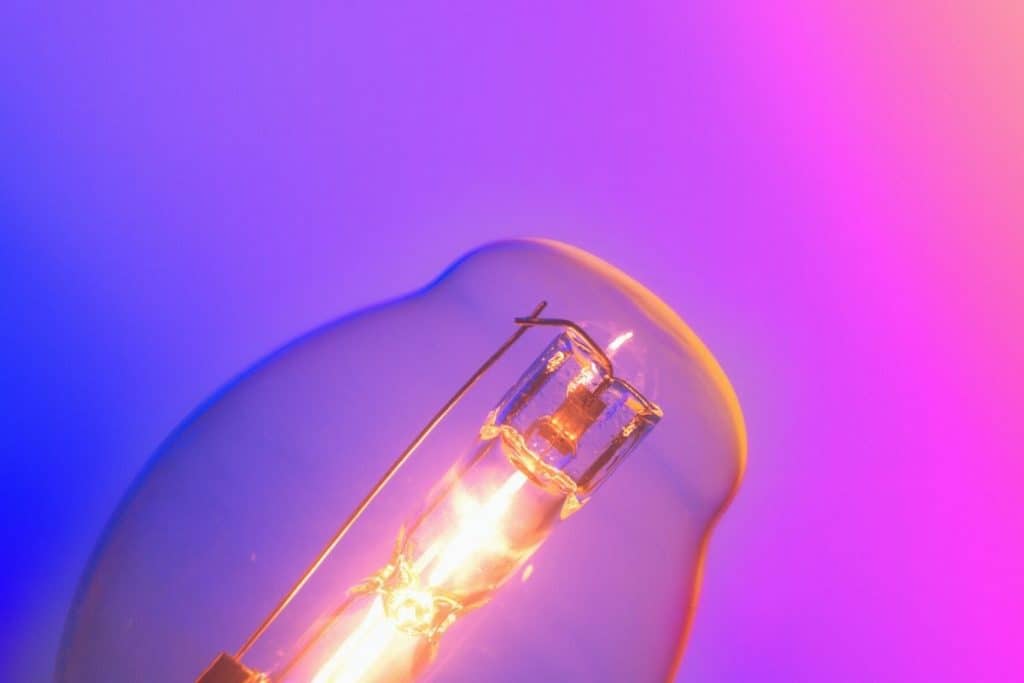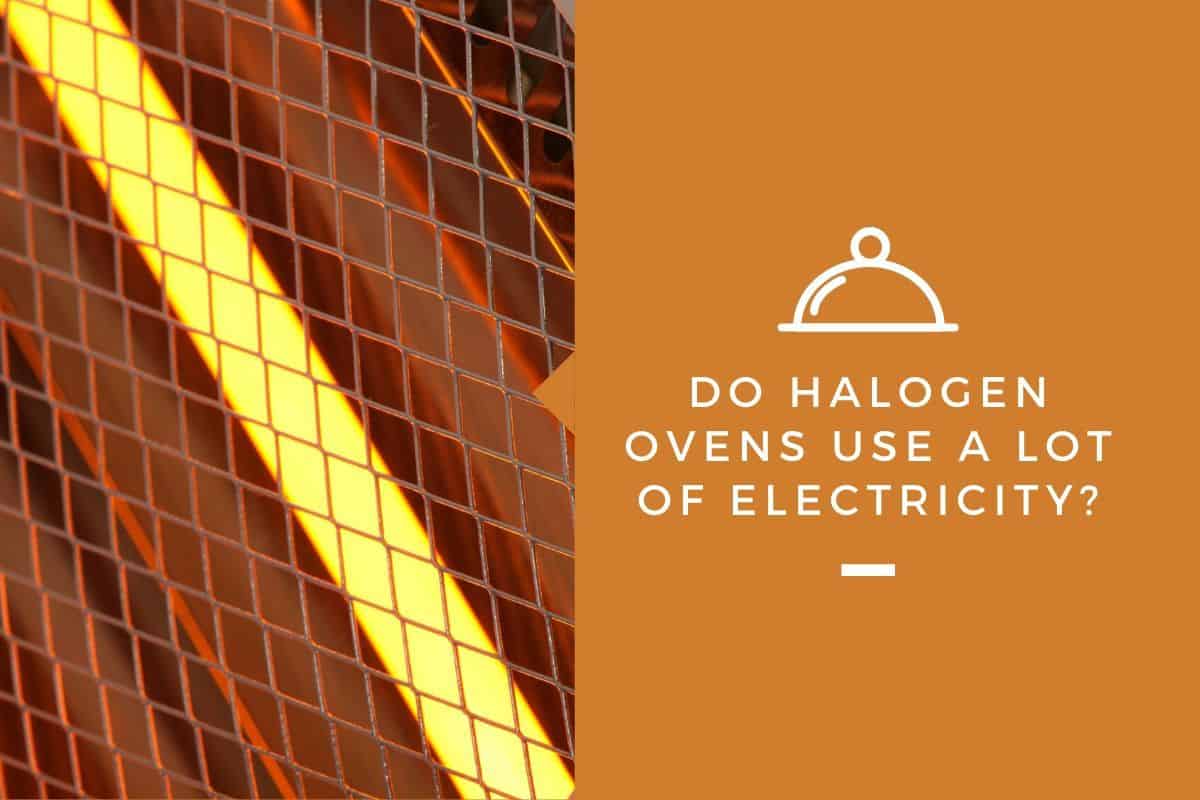When you get a great new appliance, it’s easy to want to use it all the time. You’re excited to see what it can do, after all. However, some people may be concerned about how much electricity it uses; this is often the case with a halogen oven.
Do halogen ovens use a lot of electricity? Halogen ovens do use a lot of electricity per unit of time when compared to conventional ovens. However, because they cook more quickly than conventional ovens, they end up using less electricity to cook any given meal.
The average (or standard) halogen oven runs at about 1300 watts. Running a halogen oven at 1300 watts for an hour a day at the average US rate of 13.19 cents per kWh would cost about 65$ per year.
That’s one hour per day, which is more than most people use their halogen ovens.
If you’re interested in getting a halogen oven, of course you want to make sure that it doesn’t consume too much electricity. It’s worth the effort to learn a little bit about halogen ovens so that you know how they work and consume electricity. This way, you can make an informed choice.
What Is a Halogen Oven?
A halogen oven is a kitchen appliance that is meant for cooking. It uses a bright halogen light to create heat. The oven also includes a fan, which spreads the heat throughout the oven and cooks your food.
The oven also includes a thermostat, so it can keep track of the temperature in the interior. This means that it has the capability of shutting off the light when it gets too hot.
Many people like halogen ovens because they are a lot smaller than conventional ovens and take up less space. Additionally, they have the capability to cook your food almost three times faster than a conventional oven would.
What Makes Halogen Ovens So Efficient?
Halogen ovens can cook your food significantly faster than conventional ovens in most cases. Why is this the case? It has a lot to do with the way halogen ovens operate.
Generally speaking, a halogen oven is composed of a glass bowl, a lid, halogen bulbs, and a fan. When you put it on, beams of far-infrared radiation are released from these bulbs. These waves produce heat, which ultimately cooks your food. The fan functions to circulate hot air around the food, which cooks it quickly.
When the food is exposed to the radiation within the halogen oven, large amounts of energy are transferred to the food in short periods of time. The energy provokes water molecules and organic compounds within the food, including fats, proteins, and starches, to start vibrating and rotating.
This produces heat, which kills microorganisms within the food and gives the food a crispy and sometimes brown surface.
The radiation in a halogen oven not only cooks food quickly, it also is almost sure to disinfect the food. In fact, infrared waves are used in the food industry as a means of thermal disinfection.
They can inactivate agents, including spores, bacteria, mold, and yeast, in different types of solid and liquid food.
Halogen ovens utilize dry heat, as opposed to moist heat that is used by devices such as pressure cookers. Moist-heat cooking uses steam and water as the medium, whereas dry-heat cooking uses either air or the fat that is within the food. To learn more about how halogen ovens cook food, click here.
How Much Electricity Do Halogen Ovens Use?

Halogen ovens are still relatively uncommon. Because of this, there isn’t a whole lot of data available about how much energy they use. However, the Centre for Sustainable Energy in the United Kingdom has produced some numbers that can help answer this question.
If you’re cooking a whole chicken three times a week, a halogen oven will cost less than an electric oven, but more than a gas oven. It consumes more kWh of electricity than the electric oven, meaning that the hourly consumption of electricity is higher.
However, because the cooking time is shortened so significantly, the halogen oven ends up consuming less electricity than the electric oven would consume for the exact same task.
You should keep in mind that halogen ovens are usually significantly smaller than conventional ovens. Because of this, if you are cooking large amounts of food at a time, you might end up using more electricity and spending more money with a halogen oven. The efficiency really depends on how much food you are going to be cooking.
It’s a good idea to remember that halogen ovens consume quite a bit of electricity per hour. However, because of the shortened amount of time that is involved in cooking projects, you might end up consuming less electricity overall. This could be very good for your electric bill in the long run.
If you want to read a little bit more about halogen ovens and efficiency when it comes to electricity consumption, click here.
What Are Some Things to Keep in Mind When Using a Halogen Oven?
In addition to electricity consumption, there are a few things that you should keep in mind with a halogen oven. Whether or not it saves you on your electric bill, you want to make sure that you’re taking care of it so that it has the longest lifetime possible.
One thing you need to do with the halogen oven is to make sure that you keep the heating element safe. A lot of halogen ovens will include removable heating elements, and you need to take care of these in order to extend the life of the oven as long as possible.
You can keep the element in a grill tray rack for safe storage, since a lot of these ovens come with lid stands that are somewhat flimsy.
You also need to make sure to clean the lid on your halogen oven. This is where the largest amount of cooking grease buildup is going to occur. You should wipe it down with a wet cloth after each usage.
A lot of halogen ovens will also come with extender rings, which allow you to cook multiple different types of food simultaneously. These can also help make sure that your food isn’t overcooked. This can be very useful when you’re trying to cook large items, such as roasts or whole chickens.
Overall, the upkeep that comes with a halogen oven isn’t nearly as much as what you need to do with a conventional oven. This is due to the smaller size of the oven, as well as its unique structure.
Also, you can cook quick, simple, and healthy meals in one of these devices, as long as you make sure that you know how to use it.
Final Thoughts
If you’re interested in getting a halogen oven, it could be a good investment. Even though these ovens consume quite a bit of electricity per unit of time, they often more than make up for it with quick cooking times. This way, you are using less electricity, and you will find that your meal is ready much more quickly.
There are things that you should keep in mind if you want to get a halogen oven. For example, you need to maintain it properly for it to continue to work. However, as long as you are willing to do what is necessary, a halogen oven could be a very good addition to your kitchen and routine.
Halogen ovens aren’t very common just yet, but there are plenty of good reasons to use them. If you get one for yourself, you can see just what these devices have to offer.
You can even compare your electric bill when you were using a conventional oven to the one that you get with the halogen oven, and you can see for yourself which one is higher.

